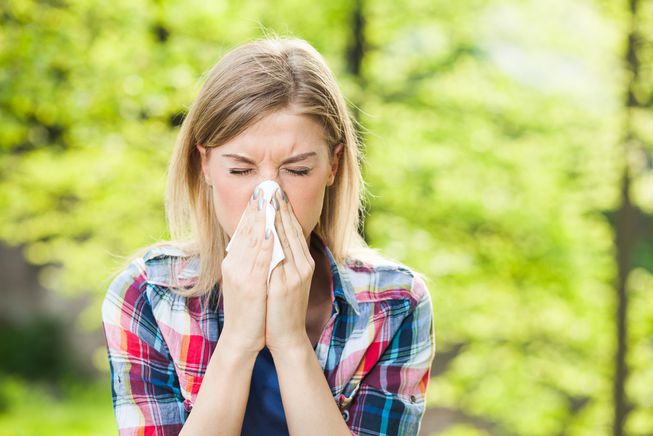By: Dr. Nosheen Ali, Bureau Chief-ICN MP
BHOPAL: On exposure to various foreign substances viz., pollens , animal dander, latex, certain food items, dust mites etc. our body produces varieties of responses immediately so as to combat its bad effects that may at times be life threatening. These responses are manifested as sneezing, coughing, running nose, watery eyes, diarrhoea, vomiting, skin eruptions etc. Such type of reaction of an individual’s immune system to substances in environment that are usually harmless is termed allergy. And the substances are known as allergens.
The term allergy was defined by Clemens Von Perquet as “an altered capacity of the body to react to a foreign substance”.
It’s one of a type of immune responses that are termed hypersensitivity reactions. It produces immunological tissue injury. There are four types of hypersensitivity reactions classified by Coombs& Gell. Allergy comes in Type I Hypersensitivity mediated by IgE antibodies.
WHAT CAUSES ALLERGIC REACTIONS
When a person comes in contact with an allergen, our body’s immune system recognize the allergen as foreign substance & gets ready to attack.
- On first contact to allergens(antigen) immune system commences production of antibodies called IgE(Immunoglobulin E. The antibodies so formed bind to Fc receptors present on surface of mast cells & basophils.
- Second contact with the same antigen, IgE antibodies on surface of mast cells –basophils get firmly attached to Fc receptors & causes membrane lysis, influx of sodium & water& degnanulation of mastcells-basophils.
- Released granules contain Histamine, Serotonin, Leucotriene B4 & D4 , Prostaglandin ( Thromboxane A2, PGA2, PGE2), Chemotactic factors of Anaphylaxis for neutrophils & eosinophils, Platelet activating factor.
- These mediators leads to:
a)Increased smooth muscle contraction + peripheral vasodilatation+ increases vascular permeability
- b) shock
- c) Extravasation of capillary( Erythema)
d)Fluid shift into interstitial space( Edema)
- e) Increases nasal secretion
- f) increased lacrimal secretion
g)Pruritus( itching)
- h) Eosinophils & Neutrophils spread to site of injury – Eosonophilia & Neutrophilia
TYPES OF ALLERGIC REACTIONS
| Syndrome | Common allergens | Route of entry | Response | ||
| Systemic anaphylaxis | Drugs
Serum Venoms |
Intravenous or oral absorption into blood | Edema
Increased vascular permeability Tracheal occlusion Bronchospasm Circulatory collapse Death |
||
| Urticaria
(cutaneous anaphylaxis) |
Insect bites | Subcutaneous | Congestion
& increased vascular permeability |
||
| Allergic rhinitis(Hay fever) | Pollen
Dust mites |
Inhalation | Edema of nasal mucosa with irritation
Mucus secretion |
||
| Asthma | Animal dander
Dust |
Inhalation | Bronchial constriction
Increased mucus production Inflammation of airway |
||
| Food allergy | Pea nuts
Shell fish Milk Eggs Fish |
Oral | Vomiting
Diarrhoea Pruritis Urticaria Anaphylaxis |
||
| Latex allergy | Natural rubber latex | Contact with proteins found in natural latex rubber | Itching
Erythema Congestion |
||
| Dermatitis
(Eczema) |
Detergents
Jewelry Soaps Fragrances Cosmetics |
On contact with a certain substance | Skin rash
Itching Papules Fissures |
||




